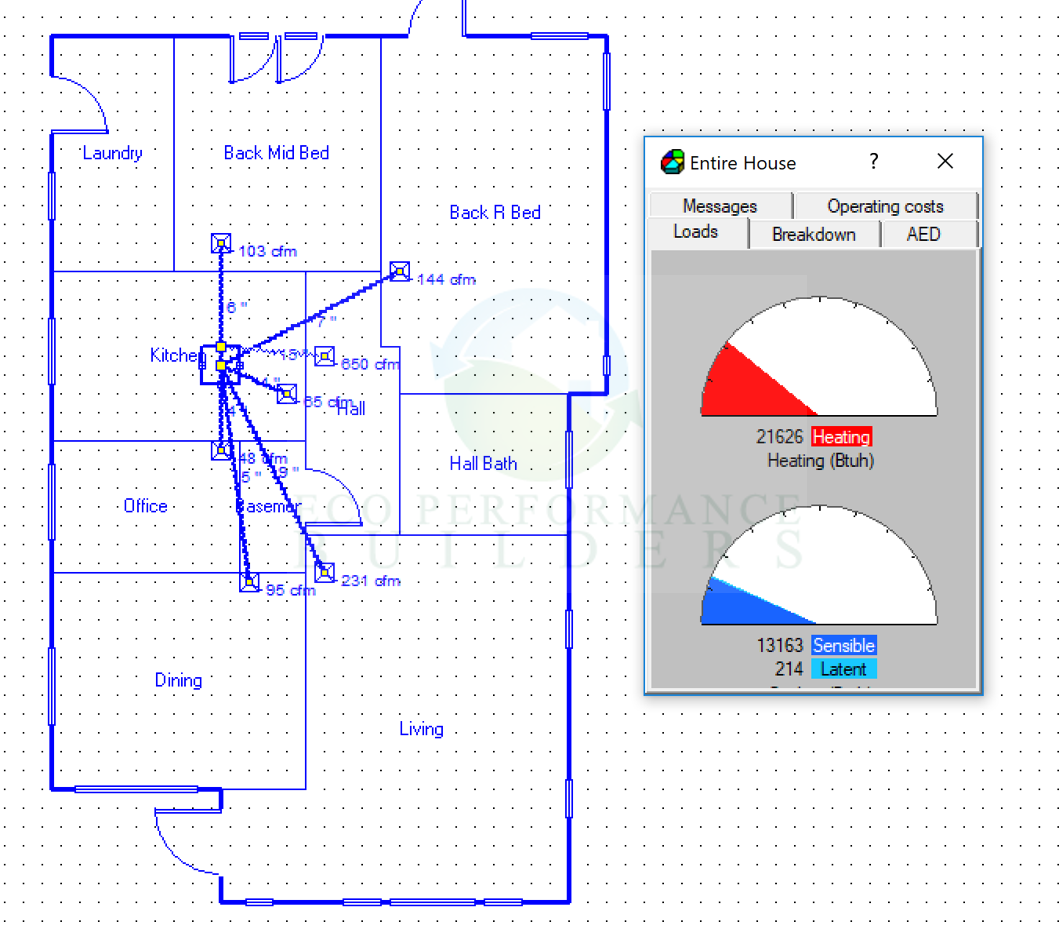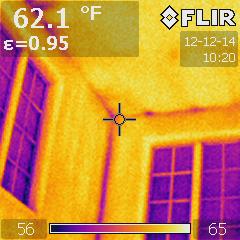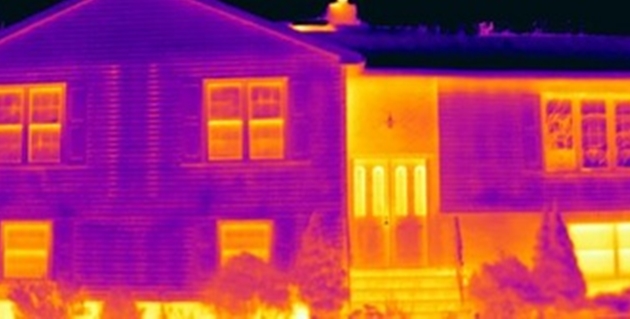Step 1: Energy Audit
Step 2: Home Performance Work
Step 3: Test-Out Verification
[nggallery id=25]
What is a Home Performance Assessment, A.K.A. Energy Audit
Prior to working on a home we perform a comprehensive analysis of your home’s performance. This is a multi-step test that tells us how your home’s synergistic elements are functioning as a system. The analysis is focused on Energy Efficiency, Comfort Problems, Indoor Air Quality, Health and Safety Issues, and Durability. Prior to the test we ask you, the home owner, about any issues you notice with the house. We want to know about comfort and moisture issues, high utility bills, drafts and any other concerns you have. This information, along with our test results, helps us come up with a remediation plan.
Before a variety of recommended options are made, we first create a software energy model based off our detailed measurements of the home and energy audit test results. It is in this way that we quantitatively prioritize projects according to cost effectiveness and energy savings. The energy model is also a pre-requisite for qualifying for an Energy Upgrade California rebate and the tool by which one can find out how large the rebate will be for varying scopes of work.
What tests are performed on an Energy audit?
 After performing the energy audit analysis we will present you with a quantitative report of how your home is functioning, prioritized remediation steps, benefits and estimated energy savings that can be achieved. After sending the report off and giving you time to review it, we will go over it with you via a conference call or in person if desired*.
After performing the energy audit analysis we will present you with a quantitative report of how your home is functioning, prioritized remediation steps, benefits and estimated energy savings that can be achieved. After sending the report off and giving you time to review it, we will go over it with you via a conference call or in person if desired*.
- Combustion Appliance Zone Testing: Water heater, furnace, gas stove. We test each of these appliances for correct ventilation of combustion gasses, correct burning of fuel and efficiency of the hot water heater and furnace.
- Home Leakage Test: We test how leaky your home is. We place a blower door fan and canopy at your exterior door, pressurize your home and determine how much air leaks out of your home on a regular basis. This test is important because your home leakage information is crucial to heating and air conditioning equipment sizing.
- Infra Red Camera Inspection: With your exhaust fans running (or blower door on low) we take infra red readings of your thermal envelope. We do this to examine how well your thermal envelope is functioning. It shows us improperly installed insulation, missing insulation, air leaks, thermal bypasses, intersticial cavities and even moisture issues. We compliment this test with a visual assessment of your attic and crawlspace by going to the areas where we saw the problems with the infra red camera.
Infrared photos of Attic Insulation:
Infrared photos of Wall Insulation:
Infrared photos of Air Leakage:
- Visual Inspection of Thermal Envelope: We crawl into your attic and crawl space and get a good view of exactly what’s going on in these critical areas. We have a good idea of where the bad areas are from the thermal images we obtained from the IR camera so we go there first to see what is happening. We also go over the entire area to check for things such as your exhaust ventilation ducting, heating and air conditioning duct work, insulation levels and quality, insulation installation and anything else we can see that is wrong.
HVAC System Check: Heating Ventilation and Air Conditioning
- Duct Leakage Test: For this Energy audit test we seal up all of your supply registers in your home and pressurize your system with a low pressure through your return air grille. Our device tells us how much air is required to maintain the low pressure of 25 pascals which, along with your systems size, gives us your duct leakage percentage. According to the California Energy Commission the average home in California has a duct leakage rate of 30%. We can normally bring this leakage down to 5%-10% without a problem.
- Static Pressure Test: We measure the pressure on your blower motor from both the supply and return side of your furnace / air handler. This test is important in determining airflow of your system, system efficiency, proper / inproper duct work and performance.
- Heat Rise Measurement: We measure the change in temperature of the air before and after the furnace / heater. This lets us know if the heater is operating at manufacturers recommendations, running efficiently and if it is delivering comfort to the home.
- Air Filter: We take a look at your air filter and make sure it isn’t clogged and that it is the correct filter for your system.
Other Miscellaneous Tests
- Lighting: We look at your lighting and calculate what savings you can obtain by switching to a more efficient source of light. We always look for what is cost effective and what you feel comfortable with.
- Appliances: We look at the appliances in your home and advise on what options you may have to save energy or water with new units.
- Safety and Health Issues: The whole time we are inspecting your home for performance we are always on the lookout for safety concerns. In fact most things that affect the performance of a home affect the safety and / or health of a home. Example: Duct leakage;
- Measurements of the home: Last, but far from least, is a full detailed measurement of the home and an ACCA Manual J heating and cooling load calculation for your home. This determines the size of equipment your home needs. This is done in order to build the floor plan energy model of the home and have enough data to make accurate decision. Home components that are measured are as follows: room area and volumes, window size/type/room/orientations, size of each supply register, area of each crawlspace and attic, insulation levels everywhere, building components and framing styles, and more.

Summary
We don’t just test each system in your house working independently, we look at how they all work together. For instance, a room may be too cold in the winter and too hot in the summer. We test each rooms air output from the register and compare it to what it should be. It could be that the air output is too low, which means raising it would remedy the problem. It could also be that the room in question has poorly installed insulation, missing insulation or large air leaks. Sometimes the best solution would be to fix the envelope instead of delivering more air. That is one of the differences in a Heating and Air contractor and a Home Performance contractor. We look at the big picture.




